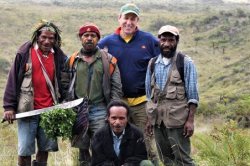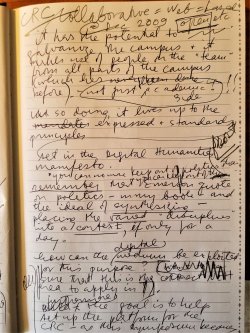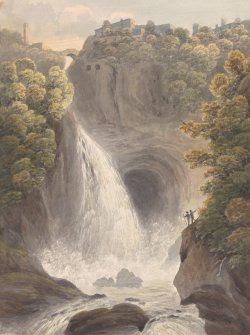The Tenth Annual Creative Research Center Symposium on the Imagination
Days of Future Past: Lessons Learned on the Other Side of the Earth
As the world’s population nears 9 billion, will we be able to save the natural ecosystems we depend upon for survival? Perhaps the key to humanity’s future lies in our past.

Dr. Bill Thomas, former Director of the New Jersey School of Conservation and winner of the Lowell Thomas Award for Exploration has spent the past 30 years living with New Guinea’s most remote societies, learning their secrets toward creating a healthy and biologically diverse environment — on the other side of the globe.
Dr. Thomas shares with our community the enduring knowledge he has gained in New Guinea — keys to sustainability from humanity’s past that we can hopefully apply to our shared future.
Watch Dr. Thomas’ inspiring talk and colorful travelogue now

A page from the December, 2009 “incubation journal” of Director Neil Baldwin, developing the concept of The Creative Research Center.
During the 2019-2020 Academic Year, the Creative Research Center commemorates its first decade of institutional life.
The Creative Research Center (CRC) is a born-digital, dynamic, nimble, open-source, collaborative space — a Web forum to stimulate, reinvigorate, promote and publicize “Very Large-Scale Conversations.”
What we’re focused on is creativity. ‘Genius’ is a state, but creativity is an activity: It’s stuff you’re doing.”
Since our pioneering launch in April 2010, the CRC has lived in the College of the Arts of Montclair State University; however, the arts are by no means the sole proprietors of imaginative thinking. The reason-for-being of the Creative Research Center is to inspire discussion of the imagination and creativity across all fields of knowledge. The environment of Montclair State as an aspirational public university is the ideal place to incubate such a Center.
I see the blog form moving into scholarship through more diary-like texts. There is also a more European-influenced urge to write speculative scholarly essays or meditations with minimal footnotes and apparatus.
The CRC continues to be energized by curatorial, editorial and outreach intentions to break down the so-called “silos” among academic colleges, departments and programs. Outside our familiar academic culture lies a vast and endangered world. Daily occurrences on the big stages of our overstressed society and natural environment effect – in ways writ large and small – the way men and women in the post-9/11 millennial generation live their lives.
The first challenge of the new CRC was to spark engaged, interactive (and intergenerational) discourse, crossing over academic boundaries to address real-world issues. The first great American trans-disciplinary (transcendental) thinker, Ralph Waldo Emerson, said it well, back in 1862: “It is impossible to extricate oneself from the questions in which your age is involved. You can no more keep out of politics than you can keep out of the frost.”
The CRC encourages communication across the permeable membrane between public and private worlds and spheres; and explores the impact of large contexts upon the intimate content of our thoughts and character, no matter what intellectual and imaginative roads are pursued.
This year, borrowing (with admiration) a provocative question posed by the Museum of Modern Art, the CRC is likewise asking, “What happens at the intersection of precise knowledge with infinite possibility?” We are going to explore the revival of “The Long Form” as a way of expression in our “tweeting” world. We are going to encourage the intelligences of University faculty doing new work to think of our site as a blank canvas existing for the exercise of their imaginations.
